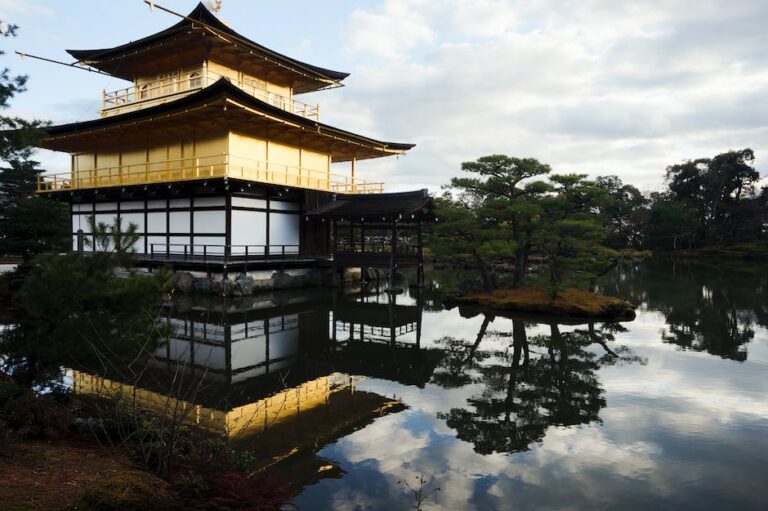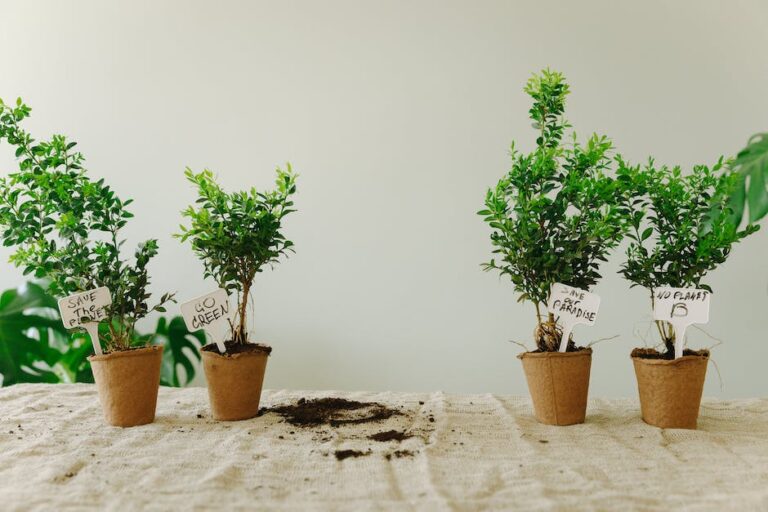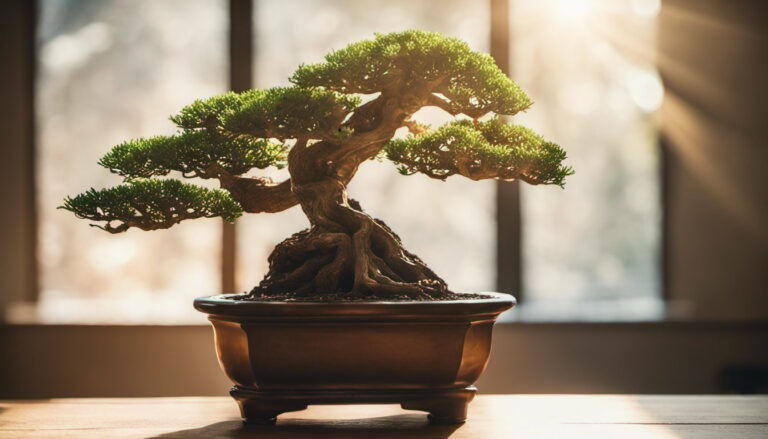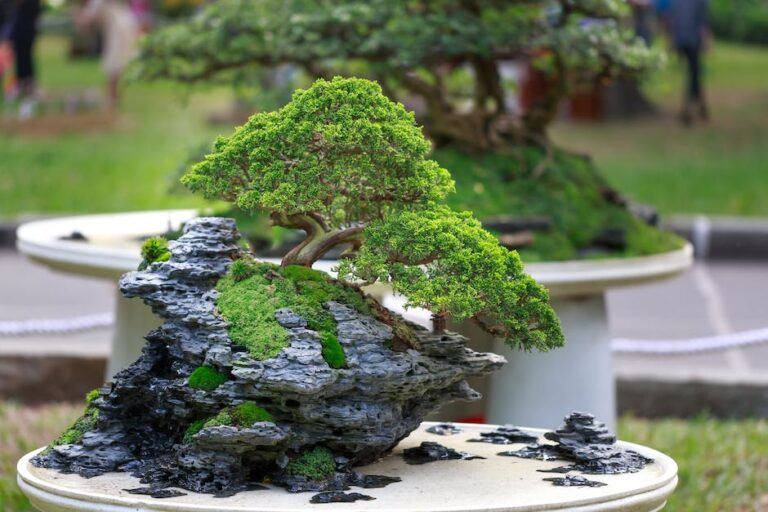Bonsai Or Tree
Are you torn between the beauty of a bonsai and the majesty of a regular tree? Well, fret no  more!
more!
In this article, we’ll guide you through the fascinating world of bonsai and help you decide which path to take.
We’ll explore different types of bonsai trees, discuss the benefits of growing them, and provide essential care tips.
So, whether you’re looking for a decorative addition to your home or a unique hobby, we’ve got you covered.
Let’s delve into the captivating world of bonsai or tree.
Key Takeaways
- Types of bonsai trees include formal upright, informal upright, cascade, and various other styles.
- Growing bonsai trees has benefits such as stress reduction, improved concentration, mindfulness, creativity, and a sense of accomplishment.
- Caring for bonsai trees involves regular watering, providing adequate sunlight, and using pruning techniques such as pinching, thinning, and wiring.
- When choosing between bonsai and regular trees, factors to consider include size, maintenance, aesthetics, time commitment, and skill level.
Types of Bonsai Trees
If you’re interested in bonsai trees, you should know that there are various types to choose from. Growing bonsai for beginners can be an exciting and rewarding hobby.
One of the first things to consider when starting out is the different styles of bonsai trees. The formal upright style, also known as Chokkan, is characterized by a straight, upright trunk with branches gradually decreasing in size from the bottom to the top.
The informal upright style, or Moyogi, features a more natural and asymmetrical shape with a slightly slanted trunk. The cascade style, or Kengai, imitates a tree growing on a cliff, with branches cascading downwards. Other styles include the semi-cascade, literati, windswept, and broom.
Each style offers its own unique aesthetic and challenges for the bonsai enthusiast. Learning about these different styles and their characteristics will help you choose the type of bonsai tree that suits your preferences and skill level.
Understanding the diverse range of bonsai styles is just the first step towards exploring the benefits of growing bonsai.
Benefits of Growing Bonsai
Growing bonsai can provide numerous benefits. The art of cultivating these miniature trees has been practiced for centuries and has proven to have positive effects on mental health. Here are some of the benefits of growing bonsai:
- Stress reduction: Taking care of bonsai trees requires focus and attention, which helps to divert your mind from daily stressors and promotes a sense of calm.
- Improved concentration: Bonsai cultivation involves meticulous pruning, wiring, and watering, which require concentration and attention to detail. This improves your ability to focus.
- Mindfulness: Engaging with bonsai encourages mindfulness. It requires you to be fully present in the moment, observing and tending to the needs of the tree.
- Creativity: Bonsai allows for artistic expression. You can shape and style the tree according to your vision, stimulating your creative thinking.
- Sense of accomplishment: Witnessing the growth and development of your bonsai tree over time can provide a deep sense of satisfaction and achievement.
Overall, cultivating bonsai as a hobby can have significant positive impacts on your mental health. It provides relaxation, stress relief, and a creative outlet.
Caring for Bonsai Trees
To care for your bonsai properly, make sure to water it regularly and provide adequate sunlight. Bonsai trees require specific care to thrive and maintain their miniature size and aesthetic appeal. In addition to watering and sunlight, pruning techniques are essential for the health and appearance of your bonsai tree.
Pruning is a crucial aspect of bonsai tree care, as it helps maintain the desired shape and size, promotes new growth, and prevents overcrowding. There are several pruning techniques you can use, including pinching, thinning, and wiring. Pinching involves removing the terminal buds to encourage back-budding and create a denser foliage. Thinning involves removing excess branches and leaves to maintain the desired shape and balance. Wiring is used to shape the branches and trunk by gently bending them into the desired position.
By incorporating these pruning techniques and following these bonsai tree care tips, you can ensure the health and beauty of your bonsai for years to come. Remember to water regularly, provide adequate sunlight, and prune with care.
| Pruning Technique | Description |
|---|---|
| Pinching | Removing terminal buds to encourage back-budding and denser foliage. |
| Thinning | Removing excess branches and leaves to maintain shape and balance. |
| Wiring | Shaping branches and trunk by bending them into desired position. |
Choosing Between Bonsai and Regular Trees
When deciding between a regular tree and a bonsai, consider the amount of space you have available and the level of maintenance you are willing to commit to. Factors to consider when choosing between bonsai and regular trees include:
- Size: Bonsai trees are small and can fit in small spaces, while regular trees can grow large and require ample space.
- Maintenance: Bonsai trees require regular pruning and shaping to maintain their miniature size and artistic form. Regular trees may only require occasional trimming.
- Aesthetics: Bonsai trees are considered a form of art, with a rich history and cultural significance. Regular trees, on the other hand, offer a more natural and traditional look.
- Time commitment: Bonsai trees require attention and care on a regular basis, while regular trees may only need watering and occasional care.
- Skill level: Bonsai cultivation requires knowledge and expertise in pruning and shaping techniques, while regular trees can be grown by anyone.
Considering these factors will help you make an informed decision between bonsai and regular trees.
Bonsai as a Decorative Element
Adding a bonsai to your home decor can create an elegant and visually appealing focal point. Bonsai, as a hobby, offers a unique way to express your creativity and appreciation for nature. These miniature trees, meticulously pruned and shaped, symbolize harmony, balance, and tranquility. Incorporating a bonsai into your living space not only adds beauty but also brings a sense of calm and serenity. To further understand the impact of a bonsai as a decorative element, let’s take a look at the symbolism behind some popular bonsai tree species:
| Species | Symbolism |
|---|---|
| Pine | Longevity, endurance |
| Maple | Balance, harmony |
| Juniper | Strength, protection |
| Cherry Blossom | Beauty, transience |
| Elm | Wisdom, intuition |
Conclusion
In conclusion, bonsai trees are a fantastic addition to any garden or indoor space.
With their intricate designs and miniature size, they add a touch of elegance and sophistication.
By growing bonsai, you can enjoy the benefits of connecting with nature and honing your gardening skills.
Remember, caring for bonsai trees requires attention to detail and regular maintenance.
So, whether you choose a bonsai or a regular tree, make sure to choose the one that suits your preferences and fits in with your overall design aesthetic.
Happy gardening!







